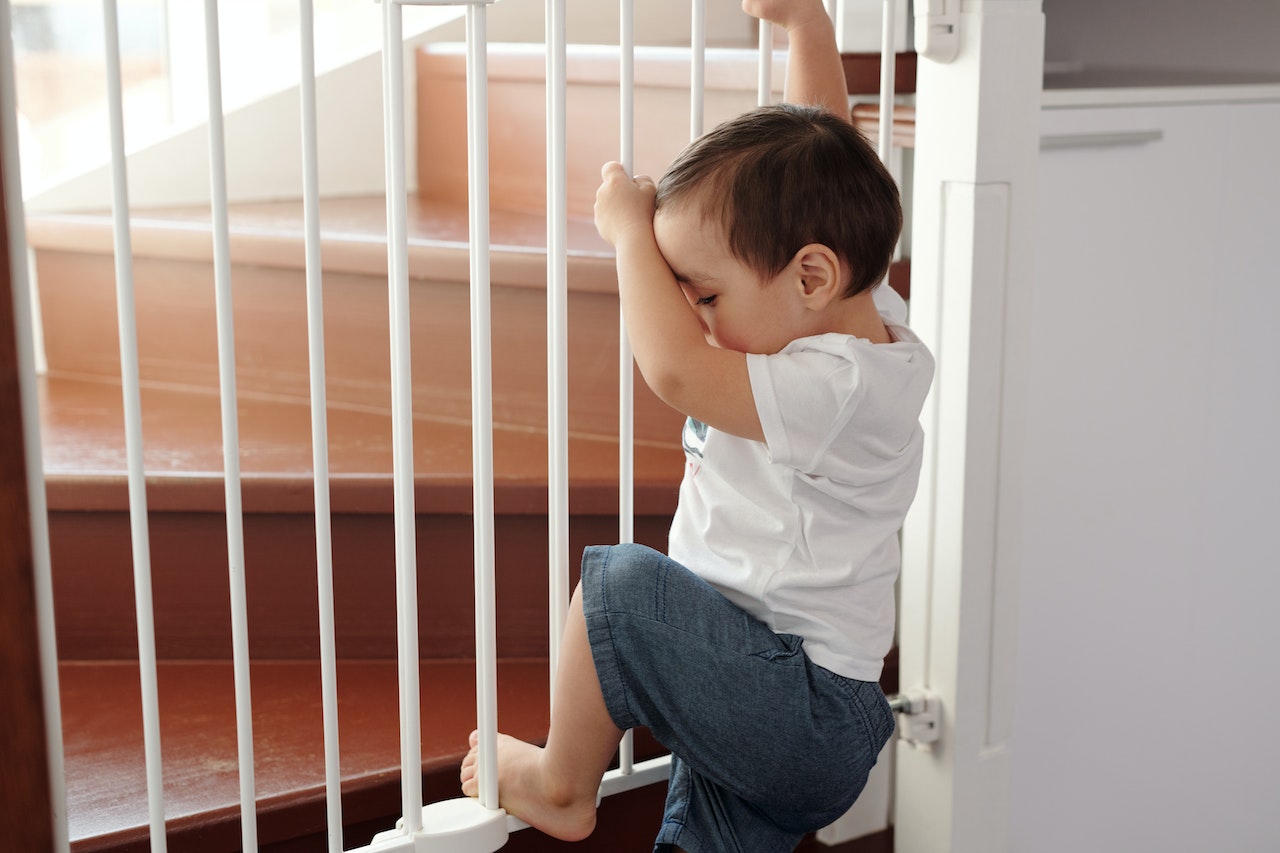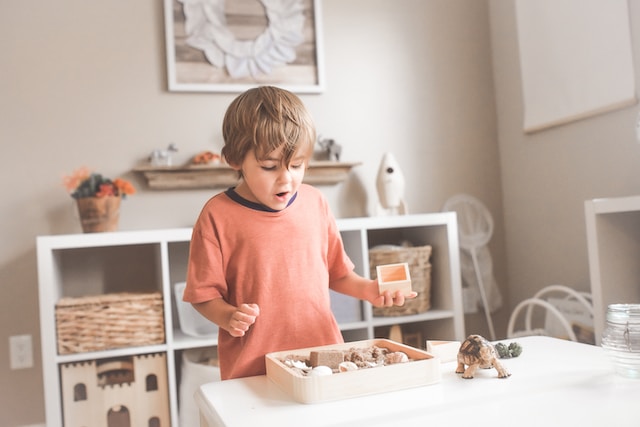Our homes are a place of comfort and security, but sometimes, they can also harbor hidden dangers that threaten the well-being of you and your loved ones. Whether you are a new homeowner, a renter, or simply want to enhance the safety of your living space, there are several things you need to look after to ensure your home security and eliminate household hazards.
By detecting hidden hazards in the home, you can prevent accidents, protect children and seniors, and detect problems like mold or water leaks before they become bigger. This will give you not just peace of mind but financial savings in the long run. Moreover, if you plan to sell your property in the future, addressing hidden household hazards shows responsible homeownership and can attract potential buyers.
Table of Contents
Understanding household hazards
Within your home, falls, fires, and carbon monoxide poisoning are significant risks to be aware of. You can create a safer living environment by understanding and addressing these household hazards. We’ve identified 6 of the most common household hazards. So, let’s have a look.
1. Falls
Falls at home are a common cause of injuries, particularly among children, older adults, and individuals with mobility challenges. One out of five falls causes a serious injury such as broken bones or a head injury. The bathroom, bedroom, and stairs are the most common places for a fall. Understanding the causes and taking preventive measures can significantly reduce the risk of falls.
Causes of falls at home
- Tripping hazards: Cluttered floors, loose rugs, cords, and objects scattered across walkways.
- Slippery surfaces: Wet or slippery floors in bathrooms, kitchens, or entryways.
- Poor lighting: Inadequate lighting in hallways, staircases, or outdoor areas can make it difficult to see obstacles.
- Uneven stairs: Uneven or poorly maintained stairs, lack of handrails, or inadequate step dimensions.
- Lack of handrails: Bathrooms, showers, and staircases without grab bars or handrails pose a risk, especially for older adults.
- Furniture layout: Poorly arranged furniture, low-lying objects, or obstructed pathways.
Reducing falls risks
- Keep walkways clear: Remove clutter, toys, and other obstacles from walkways and staircases to create clear pathways.
- Secure rugs and carpets: Use non-slip mats or double-sided tape to secure rugs and carpets, preventing them from slipping.
- Adequate lighting: Ensure sufficient lighting in all areas of the home, including staircases, hallways, and outdoor pathways.
- Install handrails and grab bars: Install handrails on both sides of staircases and ensure grab bars are present in bathrooms and showers.
- Secure and maintain stairs: Repair any loose or uneven steps, and consider installing additional handrails if needed.
- Use non-slip surfaces: Apply non-slip coatings, mats, or anti-slip tape in areas prone to moisture, such as bathrooms and kitchens.
- Keep essential items within reach: Store frequently used items at waist height to minimize the need for reaching or bending.
It’s essential to regularly assess your living space for potential household hazards and make necessary modifications to create a safer environment for everyone, especially kids and seniors.
2. Fires
Fires at home can be devastating, causing injuries, property damage, and even loss of life. In 2021, there were over 350,000 residential fires. Most home fires are more likely to start in the kitchen than in any other room in the home. The second leading cause of home fires is heating sources like fireplaces.
Causes of fires at home
- Electrical malfunctions: Faulty wiring, overloaded circuits, or malfunctioning electrical appliances can spark fires.
- Cooking accidents: Unattended stovetops, grease fires, or flammable materials near heat sources.
- Heating equipment: Improper use or maintenance of heating devices such as space heaters, fireplaces, or furnaces.
- Candles and smoking: Unattended candles, improper candle usage, and careless smoking practices.
- Flammable materials: Improper storage or handling of flammable liquids, such as gasoline, cleaning agents, or solvents.
- Children and fire play: Curiosity-driven fire play by children, such as playing with matches or lighters.
Reducing fire risks
- Smoke alarms: Install smoke alarms on every level of your home and inside sleeping areas, and regularly test and maintain them.
- Fire extinguishers: Have fire extinguishers readily accessible in key areas of your home, such as the kitchen, garage, and near fireplaces.
- Cooking safety: Never leave cooking unattended, keep flammable objects away from heat sources, and have a fire extinguisher or fire blanket nearby.
- Heating safety: Follow manufacturer instructions for heating equipment, maintain proper clearance around heaters, and ensure proper ventilation.
- Candle safety: Always supervise lit candles, keep them away from flammable materials, and consider using flameless alternatives.
- Smoking safety: If you smoke, do so outside, and ensure cigarettes are properly extinguished in designated ashtrays.
- Flammable materials: Keep flammable liquids in approved containers, store them away from heat sources, and follow proper storage guidelines.
Regularly assess your home for potential fire hazards and take appropriate steps to address them.
3. Carbon monoxide poisoning
Carbon monoxide (CO) is a colorless, odorless, and tasteless gas that is highly toxic and can be lethal when inhaled. CO poisoning at home is a serious concern, as it can occur from various sources within residential settings. More than 100,000 people in the U.S. visit the emergency room each year due to accidental CO poisoning. Some of the symptoms of CO poisoning are headaches, dizziness, vomiting, weakness, confusion, blurred vision, and loss of consciousness.
Causes of carbon monoxide poisoning at home
- Improperly ventilated appliances: Malfunctioning or poorly maintained gas furnaces, water heaters, stoves, ovens, fireplaces, dryers, and generators can emit high levels of carbon monoxide if not adequately ventilated.
- Vehicle exhaust: Running a vehicle in an attached garage or close proximity to the home can lead to carbon monoxide buildup.
- Blocked chimneys or vents: Blocked or restricted chimneys, flues, or vents can prevent the proper release of carbon monoxide.
- Improperly installed heating systems: Malfunctioning heating systems, including space heaters.
Reducing carbon monoxide poisoning
- Install carbon monoxide detectors: Place carbon monoxide detectors on each level of your home and near sleeping areas. Also, test and replace batteries regularly.
- Regular maintenance: Schedule annual inspections of fuel-burning appliances, chimneys, and vents by qualified professionals to ensure they are functioning correctly.
- Proper ventilation: Ensure proper ventilation for fuel-burning appliances, such as stoves and heaters, by following manufacturer guidelines and keeping vents clear.
- Prompt action: If carbon monoxide detectors alarm or anyone exhibits symptoms of carbon monoxide poisoning, immediately evacuate the premises and contact emergency services.
Carbon monoxide poisoning is a silent danger, but regular maintenance, proper ventilation, and the use of carbon monoxide detectors are critical steps in preventing this potentially life-threatening hazard.
4. Choking
Choking incidents can happen at home, especially to young children and seniors. Over 100,000 visits to the ER every year are caused by choking accidents. Understanding the causes, prevention, and appropriate response to choking is crucial for ensuring the safety of everyone in your household.
Causes of choking at home
- Food: This is the main cause of choking, especially in young children. Choking usually occurs when a person eats too quickly, takes large bites, or consumes food that is difficult to chew or swallow, such as hard candies, nuts, or chunks of meat.
- Small objects: Small items, such as buttons, coins, or toy parts, can pose a choking hazard, particularly for young children who tend to explore objects by putting them in their mouths.
- Balloons: Inflated balloons or pieces of burst balloons can pose a choking hazard.
- Toys: Some toys, especially those with detachable parts, can present a choking risk if they are not age-appropriate or properly supervised.
Reducing choking accidents
- Food preparation: Ensure food is cut into appropriate sizes, especially for young children. Encourage proper chewing and discourage rushing while eating.
- Supervise young children: Always supervise them during mealtime and playtime to prevent them from putting small objects in their mouths.
- Keep small objects out of reach: Store small objects, such as buttons, coins, or toy parts, out of the reach of young children.
- Be mindful of balloons: Keep inflated balloons away from young children, and promptly remove any broken balloon pieces from their reach.
- Choose safe toys: Select age-appropriate toys that are free from small detachable parts or choking hazards. Regularly inspect toys for any damage or wear.
Proper first aid and CPR training can be invaluable in responding effectively to choking emergencies. Having emergency contact numbers readily available and knowing how to perform basic life-saving techniques is essential for handling choking incidents at home.
5. Electrical hazards
Home electrical hazards pose a significant electrical shock, electrocution, and fire risk. Understanding these household hazards and taking preventive measures is essential for maintaining a safe living environment. There are approximately 30,000 nonfatal electrical injuries every year which could have been prevented. The Bureau of Labor Statistics has reported that most electrical accidents are preventable by paying attention to dangerous situations and taking actionable steps.
Causes of electrical hazards at home
- Faulty wiring: Aging or damaged wiring, loose connections, or improper installations.
- Overloaded circuits: About 10% of all at-home electrocutions are caused by large appliances. Overloading outlets and circuits by plugging in too many appliances or devices can cause overheating and electrical fires.
- Damaged electrical cords: Frayed or damaged electrical cords, extension cords, or power strips can expose wires, increasing the risk of electrical shock or fire.
- Improper grounding: Electrical systems and appliances must be properly grounded to prevent electrical shocks.
- Water and electricity: The combination of water and electricity can be extremely dangerous. Contact with water near electrical outlets, appliances, or wiring can lead to electrical shock.
Reducing electrical hazards
- Professional inspections: Have a qualified electrician inspect your home’s electrical system to identify and address any potential household hazards.
- Adequate wiring: Ensure that the electrical wiring in your home is up to code, properly installed, and not damaged or deteriorated.
- Overload prevention: Avoid overloading electrical outlets and circuits by distributing the load across multiple outlets and using power strips with built-in overload protection.
- Extension cord safety: Use extension cords only temporarily, avoid running them under carpets or rugs, and replace any damaged cords.
- Childproofing outlets: Install tamper-resistant outlets or use outlet covers to prevent children from inserting objects into electrical outlets.
- Outdoor electrical safety: Use outdoor outlets, extension cords, and appliances specifically designed for outdoor use, and keep them away from water sources.
- DIY electrical work: Avoid attempting electrical repairs or installations yourself unless you are a trained electrician. Hire a professional for any electrical work.
Proper maintenance and cautious electrical usage are essential for creating a safe environment and avoiding any household hazards.
Creating a safe home environment
Creating a safe home environment is crucial for your and your family’s well-being. From conducting regular home inspections and maintenance to educating household members about safety measures. By focusing on reducing household hazards, you can establish a secure and comfortable haven for everyone in your home.
Maintaining regular home inspections and maintenance
Electrical inspections
- Hire a licensed electrician to conduct regular inspections, typically recommended every 3-5 years or as advised by a professional.
- Inspect the electrical panel for any signs of wear, loose connections, or overheating.
- Check outlets, switches, and light fixtures for any signs of damage or malfunction.
- Replace or repair faulty or outdated wiring, switches, or outlets.
- Keep appliances in good working condition to minimize potential hazards and risks. A home warranty can provide coverage for repairs or replacements of covered appliances. This will encourage you to prioritize regular maintenance and promptly address potential safety concerns.
Plumbing and water systems
- Inspect pipes, faucets, and water supply lines for leaks, corrosion, or any signs of damage.
- Test and maintain water heaters, ensuring proper pressure and temperature settings.
- Monitor for signs of water damage, such as water stains or dampness on walls or ceilings.
- Clean and maintain drainage systems, including gutters and downspouts, to prevent water buildup and potential structural damage.
HVAC systems
- Schedule regular professional maintenance and servicing of HVAC systems, ideally twice a year, before each major season change.
- Inspect air ducts for blockages, leaks, mold, or mildew growth signs.
- Maintain clear space around heating equipment, ensuring proper ventilation and minimizing fire risks.
- Inspect chimneys and flues for any blockages or damage and ensure they are properly vented.
Educating household members about safety measures
- Educate children: Teach children about fire safety, the dangers of playing with fire, and the importance of informing an adult if they find matches or lighters.
- Fire escape plan: Create and practice a fire escape plan with your family, including designated meeting points outside the home.
- Educate family members: Teach your family about household dangers such as carbon monoxide and the importance of recognizing symptoms. Moreover, establish clear protocols for addressing suspected carbon monoxide leaks or poisoning.
- Learn basic choking first aid: This equips individuals with the skills to respond effectively in choking emergencies. Therefore, look for proper training from certified organizations or attend first aid courses. Immediate action during a choking incident can significantly improve the chances of a positive outcome.
- Education and awareness: Educate your family members about electrical safety, including the dangers of water and electricity, and how to respond in case of an emergency.

When buying or renting a home, the safety of yourself and your family must be top of mind. Evaluating and identifying health and safety hazards is extremely valuable and important when making your choice. You may need to ask your landlord to make adjustments before you sign a lease, negotiate repairs before buying a property, or simply update your existing home.
Whatever you need to do, ensure you cover the basics of the potential household hazards. You can create a safer, healthier, and more enjoyable living space by remaining vigilant and proactive. If you witness a dangerous situations, see if you can solve it yourself. If needed, call a professional.




